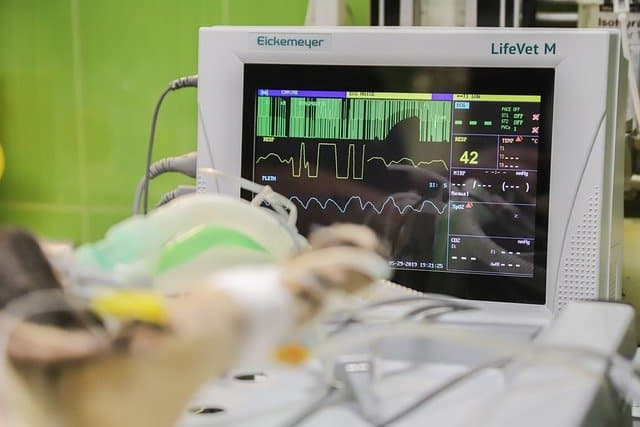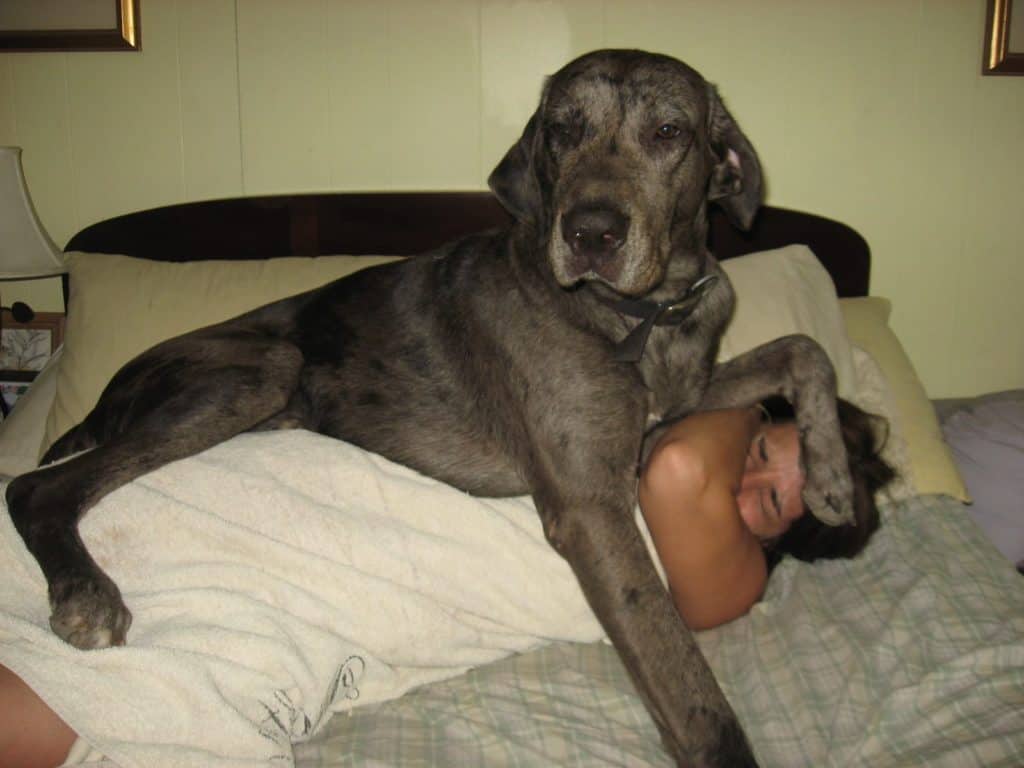
The Cavapoo is an adorable fluffball of a dog. Cavapoos get the Cavalier King Charles Spaniel’s floppy ears, silky fur, and lapdog companionability, paired with the Poodle’s soft, fluffy, hypoallergenic coat and unrivalled intelligence.
Unfortunately, however, the Cavapoo can also inherit a number of diseases from both the KC Spaniel and the Poodle breeds. So, what health problems do Cavapoos have? Read on to find out about 10 of the most common health problems that can occur in the Cavapoo breed.
Congenital Heart Attacks
It is common for the Cavapoo to inherit a propensity towards heart attacks. You may notice a Cavapoo with this condition becoming quickly exhausted during exercise or play, much more rapidly than other dogs of a similar size.
You may also notice your Cavapoo acting lethargic or weak in general, with a faintly blue tinge to the dog’s tongue, lips, or even inside their ears. This tinge is caused by a lack of oxygen.
Cavapoos should be tested for congenital heart attacks before you breed them. This will prevent the condition from being passed on to future Cavapoo puppies.
Syringomyelia
Syringomyelia refers to cavities in a Cavapoo’s spinal cord, close to the dog’s brain. These cavities are filled with fluid. This inherited disease has the potential to cause extreme discomfort and pain to your Cavapoo.
The first sign of syringomyelia that many owners notice in their Cavapoo is increased sensitivity in the dog’s head or neck area. Your Cavapoo may growl or snap at you when you pet or brush these areas or adjust their collar, for example. Another sign is your Cavapoo scratching their head or neck area frequently, trying to relieve the discomfort.
Syringomyelia is a condition that the Cavapoo most certainly gets from its Cavalier King Charles Spaniel side – did you know that almost half of all KC Cavaliers develop this disease? – though the condition also affects many other small dog and lapdog breeds.
Your vet will treat syringomyelia using corticosteroids to decrease swelling and fluid build-up. If your Cavapoo’s syringomyelia occurs due to a skull deformity, surgery will help to correct this.
Progressive Retinal Atrophy
With progressive retinal atrophy, the retinas of a Cavapoo’s eyes begin to slowly degenerate. This degeneration leads to a gradual loss of vision.
Your Cavapoo might have PRA if you notice them bumping into objects and furniture they had previously dealt with fine, or struggling to find their way around the yard at night, as well as reluctance to go for dark winter walks. You may also notice dilated (large) pupils in a Cavapoo with PRA.
Mitral Valve Disease
Another common King Charles Spaniel condition, mitral valve disease is a degenerative disease of a Cavapoo’s heart’s mitral valve. The disease often leads to heart failure. The condition can also lead to congestive heart failure, in which, though the Cavapoo’s heart still functions, it struggles to pump out enough blood for the dog’s body’s normal functioning.
It’s easy to spot when a Cavapoo has heart failure. Your previously happy, bouncy Cavapoo may now be found constantly lying around all of a sudden. Your Cavapoo might also appear obviously out of breath, too, during a walk or play. Some Cavapoos may even faint. Another common symptom is coughing or gagging.
Slipping Kneecaps
This is yet another Cavalier condition! Patella luxation or slipped kneecaps occurs in about 30% of KC Cavaliers. This genetic disposition causes the patella to fall out of alignment with the rest of a Cavapoo’s knee. The symptoms generally start to appear around a dog’s adulthood, as their body stops growing. Look out for patella luxation in Cavapoos weighing over 25 pounds.
Hip Dysplasia
Similarly to patella luxation, about 15% of all KC Spaniels are thought to have hip dysplasia. If inherited from their Cavalier half, a Cavapoo with hip dysplasia may show difficulty with movements that involve the hips, like getting up from sitting, rolling over, or getting up the stairs or onto the couch.
Though hip dysplasia is hereditary, certain environmental conditions make the disease’s development much more likely. For example, being overweight can put a lot of strain on your Cavapoo’s hips, as can running and playing on hard surfaces during puppyhood.
Cataracts
Another common Cavapoo eye condition, cataracts are a cloudy “lens” that can grow over your Cavapoos eye. Cataracts may begin as a small dot, but can gradually grow into a blatant obstruction in your Cavapoo’s eye.
More common in older Cavapoos, this hereditary condition actually does not cause any pain for your Cavapoo. Treatment is simple in most cases – just bring your Cavapoo to visit the vet and have the cataracts removed. However, if your Cavapoo’s cataracts are due to a condition like diabetes, this health issue will need to be managed so that cataracts do not occur.
Primary secretory otitis media
Primary secretory otitis media simply refers to an extreme build-up of ear wax in the middle and outer portions of a Cavapoo’s floppy ears. Though not a severe condition, PSOM can cause great discomfort for your Cavapoo. To prevent PSOM, it is very important that you clean your Cavapoo’s ears regularly, as well as towelling them thoroughly after bathing. In addition, dietary changes like consuming less oil can also help with PSOM.
Epilepsy
A heavily genetic condition, Cavapoos with epilepsy experience repeated seizures. During these seizures, your Cavapoo may fall to the ground or move erratically. You may notice your Cavapoo’s limbs moving strangely, too. Many Cavapoos with epilepsy also urinate or defecate during a seizure as well.
Cavapoos may also have a “silent” form of epilepsy, in which the dog just stares into space for a little while during a seizure. This is different from the normal times in which your Cavapoo stares into space, because your Cavapoo won’t respond to their name or to any commands.
Diagnosing epilepsy in Cavapoos can get complicated, since the symptoms overlap with many other similar conditions. However, do seek a diagnosis for your Cavapoo if you are concerned about them.
Addison’s Disease
A common Poodle disease this time, with Addison’s disease, a Cavapoo’s adrenal gland is simply unable to enough of certain vital hormones. As a result, a Cavapoo with Addison’s disease may show lethargy, reduced appetite, vomiting, and even develop cardiac arrhythmia.
Addison’s disease makes a Cavapoo more and more vulnerable to stress as the disease progresses. Stress can lead to shock in your Cavapoo, which can be fatal! This is why it’s so important to get diagnosis and treatment for Addison’s disease as soon as possible. If you like this then read our Complete Cavapoo Guide: Must Read Facts here.


